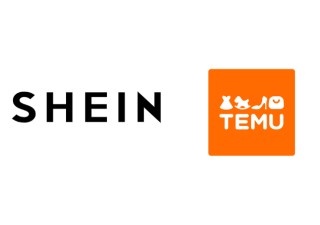Apple Inc. is no stranger to intellectual property disputes in China. Four years ago the technology company had to pay US$60 million to settle a protracted row over the iPad trademark with a Shenzhen-based company. However, its latest string of legal setbacks may have again raised alarm over the state of IP protection in the world’s second largest economy.
On March 31, it emerged that Apple had lost a trademark administrative suit at the Beijing Municipal High People’s Court which ruled that Xintong Tiandi Technology, a self-proclaimed leather goods maker, can continue to use its ‘IPHONE’ trademark on its leather products in China, according to Legal Daily, the official newspaper of the Ministry of Justice.
Xintong Tiandi said in a press release that they registered the mark in Class 18 for leather good in September 2007, which was granted in 2010. Apple had applied for the mark in Class 9, which covers computer hardware and software, back in 2002 but that was only approved in 2013.
The original iPhone was officially unveiled by the late Apple CEO Steve Jobs in January 2007, eight months before the Chinese firm filed its application. Apple has attempted to invalidate the Class 18 trademark since 2012.
On March 31, it emerged that Apple had lost a trademark administrative suit at the Beijing Municipal High People’s Court which ruled that Xintong Tiandi Technology, a leather goods maker, can continue to use its ‘IPHONE’ trademark on its leather products in China.
In its dismissal of Apple’s appeal, the Beijing court upheld the Trademark Appeal Board’s judgement that the complainant could not prove that the ‘iPhone’ brand was well known before the Chinese firm’s application. Apple has said in a statement that it intends to seek a retrial at the Supreme People’s Court.
George Chan, a partner and head of Simmons & Simmons Beijing Intellectual Property Agency, says the case speaks to the issue of badfaith trademark applications, which continues to plague China’s trademark regime.
“A party can adopt and secure rights to another person’s trademark in bad faith that already has a reputation amongst the Chinese public,” says Chan. “It is questionable how they (Xintong Tiandi Technology), as a leather goods manufacturer, managed to devise the ‘IPHONE’ mark for its leather goods.”
From an evidentiary standpoint, Chan says that the difficulty for Apple to gain well-known trademark protection lies in the fact that the US firm was not permitted to sell the handsets in mainland China until 2009. To prove that a mark is well known under China’s trademark law, one must demonstrate the reputation of its mark through certain factors such as sales volume and revenue, amount of advertising expenditures and duration of continuous usage.
“Although Apple was selling iPhones around the world prior to 2009, Apple faced some challenges in collecting evidence relating to the reputation of the ‘iPhone’ mark in China, because Apple was not selling iPhones directly to China at that time,” Chan says.
However, the result could have been different had Apple’s attorneys argued additional grounds for opposing the mark, such as Article 31 and Article 41 Paragraph 1 of the 2001 Trademark Law. Perhaps there was an issue with the evidence, according to Chan, “the right evidence may not have been put before the court. There were a lot of reports from China covering the sale (of iPhones) by third parties and people profiting handsomely from these sales at inflated prices, which might allow the trier of facts to come to a logical conclusion that the mark is well known.”
Apple’s China woes did not stop there. Less than two months after the defeat, the Beijing IP Office ruled that the company’s iPhone 6 and 6 Plus smartphones infringe on the design patent of the 100C smartphone belonging to Shenzhen Baili, a littleknown technology start-up in China. The office issued an injunction to ban the sale of the two models in Beijing, but it has been suspended pending an appeal.
According to the public record available on the State Intellectual Property Office (SIPO) website, the design patent was prosecuted by Baili in January 2014, and was granted in June. Apple released its iPhone 6 and 6 Plus handsets two months later.
A design patent is a type of industrial intellectual property that refers to “a new design proposed for the shape or pattern of a product or a combination thereof and a combination of colours and shape or pattern which is full of aesthetic sense and is suitable for industrial application”.
“It is relatively easy to obtain a design patent as opposed to invention patents, as invention patents must undergo ‘substantive examination’ before being granted, while design patents are only subjected to ‘preliminary examination’ before a design patent is granted,” Chan explains.
According to a judicial interpretation issued by the Supreme People’s Court, in deciding whether there is an infringement of a design patent, the court would take into consideration the design characteristics and the overall visual effect of the two designs, and determine on the basis of knowledge level and cognitive abilities of the average consumers.
There are at least seven similarities between Baili’s 100C V6 and Apple iPhone 6, including the thickness and the placement of camera, and the sim card tray, the Shenzhen-based company said on Sina Weibo, a popular social media platform in China.
However, Chan points out that Apple, whose appeal has been accepted by the Beijing Intellectual Property Court, may still argue that mobile phone designs should be deemed to have a relatively small design space, hence the “insignificant” differences between the two designs might be sufficient to distinguish one from another.
Article 14 of a recent judicial interpretation stipulates that “where the design space is relatively large, the People’s Court may rule that it is generally not easy for general consumers to notice the relatively insignificant differences between different designs; where the design space is relatively small, the People’s Court may rule that it is generally easy for general consumers to notice the relatively insignificant differences between different designs”.
Even if the IP Court rejects the appeal, Apple still has a right of appeal to the High People’s Court and afterwards a request for a retrial may also be filed with the Supreme People’s Court. Chan suggests that the legal process may drag on for one to two years, so even if the final judgement rules against Apple, a sales ban would not matter much as the design at issue may no longer be in use by then. Although it would remain that Apple may have to pay damages for the infringement. Chan says if Baili aggressively files complaints with other local IP offices, it could result in a sales ban for the design at issue spreading to other cities.
Either way there is an important lesson to be learnt here, according to Chan. “The case might serve as a reminder to foreign companies that they should consider registration of their patent rights in the PRC at the earliest opportunity, while walking a fine line to not leak too many details of new products before launch.”







